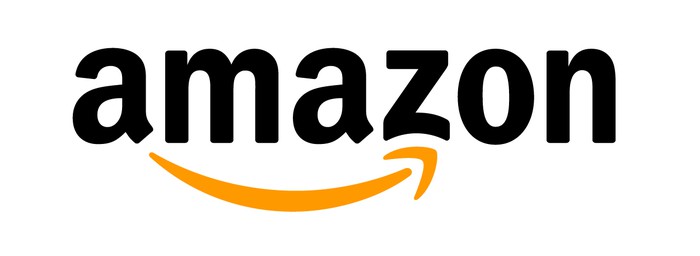亚马逊公司(AMZN.US)2025年第一度业绩电话会
文章语言:
简
繁
EN
Share
Minutes
原文
会议摘要
Amazon reported a Q1 revenue of $29.3 billion and a $155.7 billion revenue in Q1 2025, with a focus on AWS, which achieved an annualized revenue run rate of over $117 billion. The company plans to increase capacity for AI services and technology infrastructure, while Amazon Ads showed strong growth. Strategic priorities include maintaining customer trust, improving fulfillment network efficiency, and addressing potential global trade shifts.
会议速览
Amazon's Q1 2025 financial results are discussed in a conference call, with the CEO and CFO available to answer questions. The call highlights the importance of reviewing the press release for financial results and metrics, notes the forward-looking nature of the discussion, and emphasizes factors that could impact financial outcomes.
Amazon reports $155.7 billion in revenue, a 10% year-over-year increase, with operating income at $18.4 billion. The company highlights progress in business, innovation, and improved customer experiences, including enhanced selection, value, and shipping speed. Notable additions include partnerships with brands like Aura Rings and Michael Kors, and the introduction of a new luxury shopping experience. Amazon also emphasizes its efforts to keep prices low and its successful regionalization of the national fulfillment network, leading to faster delivery times and lower costs. The company plans to further optimize its network, expand same-day delivery, and increase robotics and automation. Regarding potential tariffs, Amazon notes it has not seen significant demand attenuation or price increases yet, and the company is not uniquely susceptible to tariffs related to China.
Amazon leverages its extensive selection and seller base to maintain customer trust and market share, especially during uncertain times. Its advertising sector shows strong growth, offering a broad portfolio to help brands reach large audiences. AWS continues to expand, aiding organizations in cloud migration and innovation with significant new agreements.
More than 85% of global IT spend remains on-premises, with a projected shift to cloud in the next 10-20 years. Amazon anticipates its AI business, including AWS, to significantly expand, driven by aggressive investment in AI applications. Key initiatives include the development of Alexa Plus, the use of AI in Prime fulfillment, shopping, Prime Video, and advertising, and the introduction of custom AI chips for improved price-performance. Amazon Bedrock offers a managed service for high-quality generative AI applications, featuring models from Anthropics, Me's GMA, and Amazon Nova. The company also introduced Amazon Nova Sonic for speech-based AI applications and Amazon Nova Act for web-based agentic actions, aiming to enhance accuracy and complexity in AI tasks. Amazon Q accelerates software development through agentic coding experiences and integrates with Gitlab for AI-assisted multi-step tasks.
The speaker highlights the ongoing shift from on-premises to cloud infrastructure, emphasizing its importance for AI potential and company efficiency. They also introduce Alexa Plus, a smarter personal assistant, and discuss progress in film production and satellite launches.
The company reported Q1 worldwide revenue of $155.7 billion, a 10% year-over-year increase, with operating income at $18.4 billion. North America segment revenue rose 8% to $92.9 billion, while the international segment also saw an 8% increase to $33.5 billion. Despite one-time charges impacting operating income, the company highlighted strong customer engagement, record delivery speeds for Prime members, and a focus on improving cost structure through initiatives like inbound network re-architecture, same-day delivery expansion, and increased automation.
Advertising revenue shows significant year-over-year growth, with strong adoption of full funnel advertising offerings. The company also invests in long-term opportunities like Kuiper, launching production design satellites, and monitors macroeconomic impacts to maintain customer experience and low prices.
Amazon reports a Q1 revenue of $29.3 billion, with AWS reaching an annualized revenue run rate of over $117 billion. The company highlights growth in generative AI and non-AI businesses, investing in technology infrastructure and fulfillment networks to support future growth and improve efficiency. Q2 net sales are projected between $159 billion and $164 billion, with operating income expected to range from $13 billion to $17.5 billion.
A call is opened for questions with instructions for participants to press star one to ask a question, emphasizing one question per caller for sound quality.
AWS is rapidly increasing its P5 GPU instances and Tranum II instances to support growing AI workloads, with the AI business already at a multi-billion dollar annual run rate and growing triple digits year over year. Despite fast capacity expansion, demand is outpacing supply, indicating potential for even greater revenue if capacity constraints are resolved. Supply chain issues are expected to improve as the year progresses, allowing AWS to better serve customers and drive more revenue.
The company is focusing on maintaining broad selection, low prices, and fast delivery to capitalize on various trade outcomes. Initiatives include forward buys of inventory, encouraging third-party sellers to stock up, and leveraging diverse seller strategies to offer customers the best prices regardless of potential tariff increases. Additionally, the company has diversified its production locations over the past six years to mitigate risks associated with concentration in specific regions.
The company highlights an increase in stock-based compensation and additional Kuiper launch costs in Q2, with launch costs expensed until commercialization later this year.
The unpredictability in AWS revenue, termed 'lumpy', is attributed to the uncertain growth of startups and the varying pace of enterprise cloud migration projects, impacting revenue forecasts and growth rates compared to competitors.
The discussion highlights the rapid growth of AI, particularly in productivity enhancement and cost avoidance, with notable advancements in large-scale training, chatbots, and coding agents. The speaker emphasizes the unpredictability of AI's growth, noting significant increases that were not forecasted, and suggests that we are still in the very early stages of AI's development and its potential to revolutionize customer experiences and various functions. The speaker also mentions the substantial year-over-year growth in the infrastructure side of AI, attributing it to the larger base of operations, and anticipates further capacity expansion in the coming months.
The speaker discusses the strong quarter for AWS, attributing margin growth to innovation, investment in technology, and cost-saving measures. They also highlight advancements in Alexa, emphasizing its increased intelligence and capability to perform complex tasks, and the positive customer response to these improvements.
A discussion highlights the operational focuses to ensure smooth operations during Prime Day, Thanksgiving, and holidays amidst tariff uncertainties, also querying about potential one-time or tariff-related costs impacting the 2Q EBIT guide.
The focus is on ensuring a great customer experience year-round, not just during Prime Day or peak seasons, by supporting sellers, maintaining price competitiveness, and managing inventory levels carefully to avoid fulfillment network slowdowns. Additional challenges include stock-based compensation, increased expenses, tariffs on retail purchases, and navigating uncertainties in consumer demand, leading to wider forecast ranges for the quarter. Positive trends, such as strength in April and robust advertising performance, are noted despite the unpredictability.
The company reports a $189 billion backlog, up 20% YoY, with a weighted average remaining life of 4.1 years. Enterprises are increasingly moving infrastructure to the cloud for innovation, cost efficiency, and AI integration, balancing cost optimization with the pursuit of AI-driven opportunities. The transition is a multi-year process, with companies prioritizing AI pilots and awaiting decreases in inference costs.
要点回答
Q:What are the financial results for Q1 2025?
A:Revenue for Q1 2025 was $155.7 billion, representing a 10% year-over-year growth, with an operating income of $18.4 billion and a trailing 12-month free cash flow of $25.9 billion.
Q:What is the latest progress in Amazon's fulfillment network efficiency?
A:Efforts to make the fulfillment network more efficient and cost-effective continued with the regionalization of the national fulfillment network into regional hubs. The redesign of the inbound architecture allows more items to be placed in each fulfillment center, improving delivery speeds and lowering costs. As a result, new delivery speed records were set, with more items delivered in the same day or next day in Q1 than any other quarter.
Q:How is Amazon preparing for potential heightened tariffs?
A:Amazon is monitoring the potential impact of heightened tariffs but has not seen a decrease in demand yet. Some categories have experienced heightened buying, possibly indicating suppliers are stockpiling in anticipation of potential tariffs. The average selling price of retail items has not increased significantly, with some of this reflecting forward buying by Amazon and third-party sellers. The company is not uniquely susceptible to tariffs compared to other retailers and has strategies in place to manage the potential impact.
Q:What is Amazon's position in the grocery market, and how is it weathering challenging conditions?
A:Amazon is one of the largest grocers in the U.S., with over $100 billion in gross sales in the last year. It has a vast selection of items, with hundreds of millions of unique SKUs. This large selection helps Amazon weather challenging conditions better than competitors when unexpected product trends emerge, as it was able to do during the pandemic when certain items like masks and hand sanitizers became in high demand. Additionally, in uncertain environments, customers tend to choose the provider they trust the most, and Amazon's offerings of broad selection, low prices, and speedy delivery position it to gain market share.
Q:What types of advertising does Amazon offer to brands?
A:Amazon offers a broad portfolio of full funnel advertising, including top of funnel efforts to drive brand awareness and bottom of funnel offerings that measure outcomes at the point of conversion. It also provides targeted advertising in its own entertainment properties and across various external sites.
Q:How is AWS performing and what are some of the new customer agreements mentioned?
A:AWS grew 17% year over year and now has an annualized revenue run rate of $117 billion. It has entered new agreements with various companies like Adobe, Uber, and others to modernize their infrastructure, lower costs, and speed up innovation.
Q:What are the current thoughts on the growth potential for AWS?
A:While initially seen as a chance to be a multi hundred billion dollar revenue run rate business, AWS now has the potential to be even larger, considering the future growth from moving more IT spend into the cloud.
Q:What is Amazon's strategy in terms of AI investments?
A:Amazon's strategy includes a significant investment in AI, reflected in over a thousand AI applications being built across the company. They have also developed Alexa Plus and utilize AI in fulfillment networks, shopping, Prime Video, and advertising experiences.
Q:What are some examples of AI services and models offered by Amazon?
A:Amazon offers AI services like AWS, which is constructing building blocks for AI solutions, including the new custom AI chip, T2. They also provide the Bedrock service with a range of high performing foundation models for generative AI applications and have released new models like Anthropic, GPT-4, and the Amazon Nova models, which offer leading price performance.
Q:What advancements have been made in AI agents and workflows?
A:Amazon has released research previews of AI models like Nova Act, which can perform actions within a web browser, breaking down complex workflows into reliable commands. They also have improved the accuracy of multi-step actions through these AI agents. Additionally, they've launched Amazon Q, which can autonomously execute complex workflows and assist with software development tasks.
Q:How is the growth of Amazon's AI business?
A:Amazon's AI business has a substantial annual revenue run rate and continues to grow at triple-digit year over year percentages, indicating that it is still in its early stages with high optimism for the future.
Q:What is the importance of infrastructure modernization to realize the potential of AI?
A:Infrastructure modernization is essential for companies to fully benefit from AI, as it affects technology and innovation capabilities, developer productivity, speed, cost structure, and enables the use of AI by having infrastructure and data in the cloud.
Q:What were the financial results for the first quarter across segments and how did foreign exchange impact them?
A:Worldwide revenue was $155.7 billion, a 10% increase year over year, excluding foreign exchange which equaled a $1.4 billion headwind. Worldwide operating income was $18.4 billion, with a $400 million variance above the high end of guidance. The North America segment had revenue of $92.9 billion, an 8% year-over-year increase, and the international segment had revenue of $33.5 billion, also an increase. Excluding foreign exchange, paid units grew year over year across these segments.
Q:What initiatives are contributing to value delivery to customers?
A:Initiatives include multiple deal events worldwide that drove strong customer engagement, record delivery speeds for prime members, improved inventory placement, and a vast selection of products, particularly in grocery and essential categories. They also involve partnerships with millions of independent sellers from around the world.
Q:What were the one-time charges that impacted operating income, and what would have been the adjusted operating margins?
A:One-time charges impacted North America and international operating income related to historical customer returns and inventory pull-forward. Excluding these charges, North America's operating margin would have been approximately 7.2%, and international's operating margin would have been 3.7%.
Q:What is being done to improve the cost structure and delivery efficiency?
A:The company is re-architecting the inbound network for better productivity in fulfillment and transportation, resulting in better inventory placement and higher units per package for lower delivery costs. Additional plans include fine-tuning the inbound network, building out same-day delivery sites, expanding the rural delivery network, and adding robotics and automation to facilities.
Q:What is the current focus regarding inventory placement and its benefits?
A:The current focus is on better inventory placement, which drives more in-stock selection, reduces travel distances, speeds up delivery, and increases the likelihood of combining multiple items in a pack to reduce packaging and costs.
Q:How is the advertising business performing and what is the company's investment strategy?
A:Advertising revenue grew year over year, and the company is pleased with the accelerating growth on a large base. They're investing in a full-funnel advertising offering and long-term opportunities such as Kuiper. They have also launched the production design of satellites earlier in the week and plan to launch more throughout the year.
Q:What is the company's approach to managing the macroeconomic environment and tariffs?
A:The company is closely monitoring the macroeconomic environment, including tariffs' impact, and has taken actions to protect the customer experience while keeping prices low.
Q:What were the financial results for AWS in the first quarter, and what is the forecast for the second quarter?
A:AWS generated $29.3 billion in Q1 revenue, an increase year over year, with an annualized revenue run rate of more than $117 billion. AWS operating income was $11.5 billion. For Q2, the company expects net sales between $159 billion and $164 billion, a year-over-year impact of approximately a 1% headwind from foreign exchange rates. The estimated Q2 operating income is between $13 billion and $17.5 billion.
Q:What is the impact of the seasonal increase in stock-based compensation on Q2 results?
A:Q2 results include a seasonal step-up in stock-based compensation expense, driven by the timing of the company's annual compensation cycle. The exact impact on operating income is not quantified in the provided transcript.
Q:What is the company's outlook for customer experience and value creation in the external environment?
A:The company remains focused on controllable inputs to protect the customer experience, with a continued focus on sharp prices, broad selection, and convenience. They aim to drive a better customer experience and believe in putting customers first as the only way to create lasting value for shareholders.
Q:What is the expectation regarding supply chain and capacity issues?
A:It is expected that supply chain issues and capacity constraints will continue to improve as the year progresses.
Q:What are the key strategic priorities for the company in the medium term and how are investments being prioritized?
A:The key strategic priorities are to offer the broadest selection of products at the lowest prices and to ensure fast delivery to customers. Investments are being prioritized around these objectives, including forward buys of inventory and encouraging third-party sellers to do the same to maintain low prices for customers.
Q:What measures have been taken to ensure product availability and price competitiveness?
A:The company has taken measures such as forward buys of inventory and encouraging third-party sellers to stock inventory to keep prices low for customers, emphasizing their broad selection compared to other retailers.
Q:What impact could the pandemic have on customer preferences and availability of products?
A:The pandemic could lead to the emergence of new customer preferences and a variety of products that were not previously popular or known to customers, impacting availability and variety.
Q:How has the company's strategy on production diversification helped in the current context?
A:The company's strategy of diversifying production locations has helped reduce the concentration of production in China compared to before, providing a better safeguard against current global challenges.
Q:How is stock-based compensation affecting the financial guidance for the upcoming quarters?
A:Stock-based compensation is expected to increase in Q2 due to historical trends and will then reset for the following four quarters. Additionally, there are Kuiper launch costs in Q2 which are expensed until commercialization later in the year.
Q:Why do AWS revenues fluctuate and how does this compare to competitors?
A:AWS revenues can be lumpy due to the unpredictable nature of the sales cycle, particularly for enterprise and startup customers who seek to run on top of AWS. This is a key difference from competitors and results in revenue volatility that is hard to predict.
Q:What are the typical challenges and experiences enterprises face when moving to the cloud?
A:Enterprises face a sales cycle to convince them to move from on-premise to the cloud and pick the right solution. Migration processes can vary in duration, sometimes being smaller tasks but in other cases turning into larger projects. Companies get excited about cost and innovation advantages, which leads to a larger scope of work.
Q:Why is it difficult to predict the growth rates in AI?
A:The growth rates in AI are difficult to predict because it is contingent on what enterprises choose to sequence and resource. Moreover, rapid advancements and unpredictable increases in popularity, like the recent exponential growth in coding agents, make it challenging to forecast.
Q:How is the growth cycle of AI different from traditional software, and what use cases are driving this growth?
A:The growth cycle of AI is very fast, particularly in certain types of use cases. Productivity and cost avoidance initiatives have been the most common use cases leading to AI growth. This has been observed from both customer initiatives and large-scale training runs on AWS, as well as significant growth in companies like Hootsuite and Anthropic.
Q:What potential changes in customer experiences and new agents in the market are anticipated in the future of AI?
A:The future of AI entails reinventing customer experiences and building new agents that will take on the role of various functions currently performed by humans. While significant advances have been made, many of these changes and the full extent of AI's impact are still in the early stages.
Q:How should one think about the normalized margins for AWS and the growth rates, especially given its large revenue base?
A:When considering normalized margins for AWS, it's important to understand that the year-over-year growth rate is a function of the percentage growth on the base revenue. Despite having a substantial revenue base, AWS has shown significant year-over-year growth and is expected to continue with more capacity being added in the coming months.
Q:What recent advancements have been made with Alexa, and how do they impact user behavior?
A:Recent advancements with Alexa, such as Alexa Plus, have made the digital assistant more intelligent and capable of taking real action, moving beyond just answering questions. This has led to positive feedback from customers and a shift in user behavior, with the need to say 'Alexa' only required the first time and then not needed for ongoing conversations. These changes make the user experience more natural and fluid.
Q:What are the functionalities of Alexa that are highlighted in the speech?
A:Alexa can perform various functions such as opening the shades, turning on the lights, adjusting the temperature, and picking music for setting the mood for dinner. It can also make restaurant reservations and confirm times for the user.
Q:What kind of assistance does Alexa provide according to the speaker?
A:Alexia provides the kind of assistance that is like having a great personal assistant, which is beneficial in managing daily tasks and routines, thereby helping users to be more efficient and experience convenience.
Q:What are the operational areas of focus mentioned by Andy for ensuring a smooth Prime Day, Thanksgiving, and holiday season?
A:Andy mentions the focus on ensuring that the Prime Day is not just a one-off event but a great experience all year long. This includes helping sellers deal with uncertainty, maintaining a diverse group of sellers, offering low prices, managing inventory levels in fulfillment nodes carefully to maintain productivity, and supporting sellers' experience.
Q:What does the $189 billion backlog figure represent, and what is its significance?
A:The $189 billion backlog figure represents the Q1 backlog for AWS, which is up about 20% year over year, with a weighted average remaining life of 4.1 years. It signifies the financial commitments and future workloads expected to be delivered by AWS.
Q:How have enterprise workload migration decisions changed post-pandemic?
A:Post-pandemic, enterprises have realized the need to balance moving to the cloud with ongoing AI initiatives. There's an increased understanding that moving to the cloud is crucial for staying competitive, especially given the interest in generative AI. While many have started pilots for AI, there's also a resurgence in the importance of migrating core workloads to the cloud for innovation, cost advantages, and maintaining application functionality during the transition.

Amazon.com, Inc.
Follow





